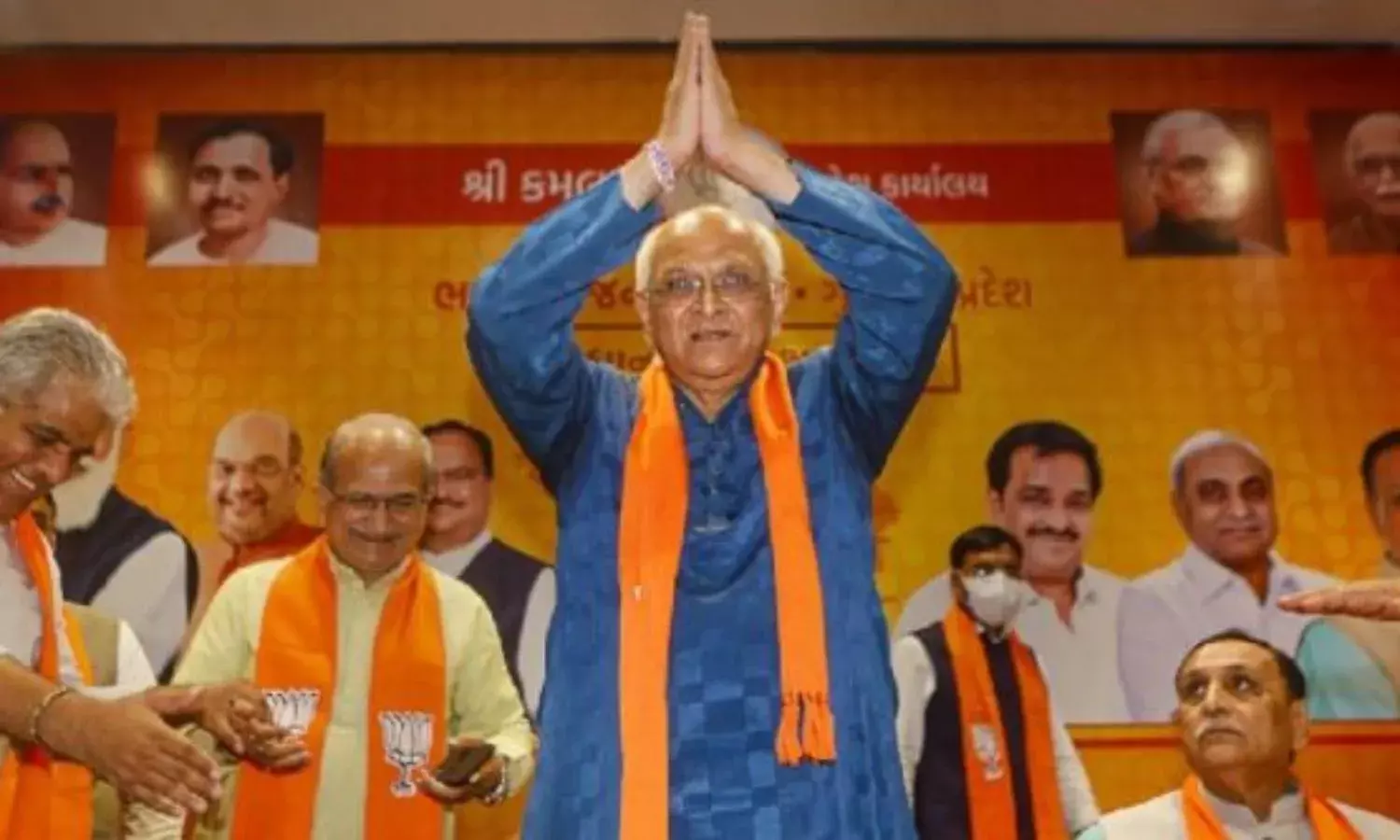BJP Chooses Bhupendra Patel to Lead Gujarat. Why?
Back to consolidating Patidar support base;

Bhupendra Patel is the new bunny out of the Bharatiya Janata Party’s hat chosen to head the party’s Gujarat citadel which goes to polls in a little over a year. That it would be a choice imposed by the all powerful leadership from the state in the centre, with Narendra Modi and Amit Shah being at the helm of affairs was a foregone conclusion, but still Patel’s name comes as a surprise as he was not seen as a frontrunner by anyone, even in the party hierarchy.
He was chosen as the next chief minister after Vijay Rupani submitted his resignation on Saturday to everyone’s surprise. Patel’s promotion is a sign of the BJPs return to appeasing the tried and tested support base of the all powerful Patidar community in the state and consolidating it further. He will be the third chief minister from the community in the last two and a half decades, after Keshubhai Patel and Anandiben Patel.
A close associate of Anandiben Patel, Bhupendra Patel is a first time legislator who won from the community bastion of Ghatlodia, which was till 2017 represented by Anandiben, with a margin of more than one lakh votes.
Prior to his election as MLA, he had been chairman of the Ahmedabad Urban Development Authority and the standing committee of the Ahmedabad Municipal Corporation, besides holding other important posts in the civic body and in institutions of his community.
The state has witnessed a smooth transition from Rupani to Patel, given the fact that Gujarat remains the laboratory of the Sangh Parivar and the BJP remains the all powerful political force here. But many questions come to mind.
Why did Rupani have to go all of a sudden? Why did the BJP have to fall back on choosing yet another chief minister from the Patel community? And if it had to be a Patel, why a person like Bhupendra Patel, who was virtually unknown before he was declared the new chief minister?
Rupani, who comes from the Jain community in Rajkot, was himself a surprise candidate when he replaced Anandiben Patel in early 2017. At that time it was Nitin Patel who was considered the frontrunner.
Sources on the ground say that Rupani’s replacement at the post was expected. It was only a matter of timing.
Observers point out that the BJP was never going to take any chances with anti-incumbency. The party was also worried about its eroding base among the Patidar or Patel community, which accounts for around 12% of the population.
The economic slowdown that began with businesses being hit badly right from demonetisation in 2016 has seen a cumulative impact, aggravated by the hasty lockdown imposed in March 2020. The cascading effect was visible in the form of small businessmen being hit badly and people losing jobs.
Rupani’s handling of the second Covid outbreak also made the government unpopular among people in the state, as they witnessed horror stories about long waits outside hospitals and oxygen shortage. Add to this the continuing inflation that has hit the working majority.
“Sooner or later questions were bound to be asked by the people. As it is, the continuing night curfew and imposition of Section 144 in the name of Covid has ensured that there is no expression of outrage in the form of any protest,” Ahmedabad sources said.
A change of chief minister will help the governing party spin a fresh narrative for the forthcoming polls, he said.
Meanwhile the disenchantment of Patels with the party had been growing at a fast pace ever since the community reservation stir under Hardik Patel in 2015.
Although the BJP won the polls soon after, the Congress performance improved considerably and one thing was sure, that there was no blanket support for the BJP anymore in the state. Hardik is now with the Congress.
And the Aam Aadmi Party making its presence felt by winning 27 of 120 seats in the recent civic body polls in Surat was also a matter of concern for the BJP.
Observers say that although the AAP growth comes at the cost of the Congress, the fact remains that it is the powerful lobby of Patels from Saurashtra that ensured its good performance in Surat - particularly in areas like Kapodra, Puna, Varaccha and Amroli that have diamond processing units where a large number of people from Saurashtra are employed.
If one looks into the political history of the state, one finds that Patels were the core support base of the Congress till the early 1980s, when former Chief Minister Madhavsinh Solanki chose to apply the KHAM (Kshatriya, Harijan, Adivasi and Muslim) combination propounded by Zinabhai Darji to win the polls.
Already at loggerheads with the Darbars (Kshatriyas) owing to clash of interests, the Patels moved towards the BJP. Observers say that certain changes in land laws made by the first BJP Chief Minister Keshubhai Patel saw the community flourish further in terms of both business and land holdings. Ever since then the community has largely remained with the BJP.
Coming back to the present, Rupani in his congratulatory message to Bhupendra Patel tweeted, “I am confident that Gujarat’s journey on the path of development will continue under Bhupendra Patel and the BJP will see a grand victory under him in the forthcoming polls.”
Hardik Patel too congratulated Bhupendra Patel, saying that he would be the last BJP chief minister in the next 25 years as the people, poor and the youth have decided to vote the party out of power:
“The BJP has given you this responsibility a few months ahead of the polls. How will you execute the tasks in the spheres of education, health, women, youth and farmers, the weaker sections that your party has failed to do in the last 25 years?”

